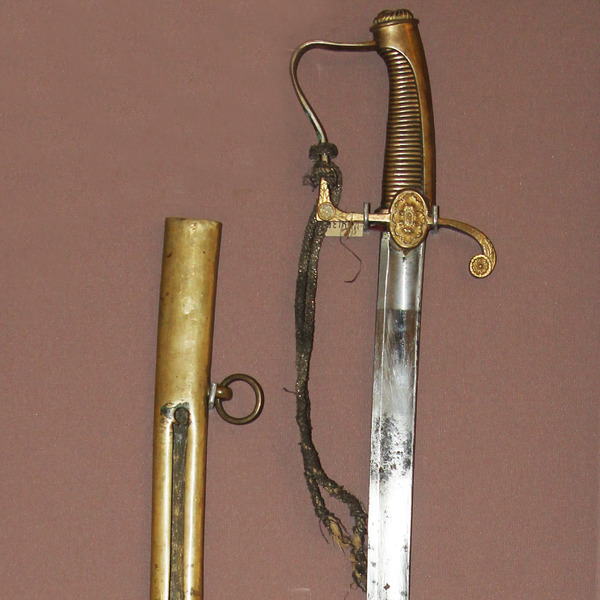Merchant sabres became known in Russia in the 19th century. The Review of Rights and Responsibilities of Russian Merchants of 1826 read: “The merchant in the first guild is entitled to wear the uniform of a province where he is registered and to carry a sword whereas those men who wear traditional Russian clothing should carry a sabre”. At the same time, neither the merchant’s children, nor his other family members were entitled to wear a sabre.
In some situations, municipal governments’ officials − the mayor, members of the municipal Duma (lower house), members and secretaries of grandmasters and courts of wards − could also carry such weapons. Merchants were allowed to carry such sabres only with a caftan. Carrying a sabre with their uniforms was prohibited.
The word “sabre” came to the Russian language from Hungarian. It is derived from “szabni”, which means “to cut”. When this type of cold arms came to Russia in the 19th century, it immediately became popular with Russian warriors who stopped using swords altogether.
Sabres tended to have a steel curved blade. The pommel of the grip was adorned with an ornate rosacea – intertwined branches of the guard. This (from the French word “garde”) was the name for all protective elements of the weapon’s hilt. It protected the fencer’s hand from being hit by the edge of his enemy’s blade should it slide.
The scabbard for the sabre was made of metal. On its front side there were some small slots, and rings. The latter were used for fastening it to the sabre belt. The lower part of the scabbard continued to a drag – a small curved metal plate. It protected the end of the scabbard, which often reached the ground. Sometimes the drag ended with a small spinning wheel which helped the scabbard roll rather than be dragged along the ground by its owner. This device was very popular in Germany but did not catch on in Russia.
The exhibition features a merchant’s sabre produced in the first half of the 19th century. Its hilt is made of brass, and the crossguard is adorned with a lion’s head. A piece of a cord is attached to the guard. It is made of intertwined silver threads braided into a cord. This is the remaining part of a sabre knot – a cord with a tassle. It was used to help the owner of the sword or sabre to pull the weapon out of the scabbard without getting hurt by the blade.
In some situations, municipal governments’ officials − the mayor, members of the municipal Duma (lower house), members and secretaries of grandmasters and courts of wards − could also carry such weapons. Merchants were allowed to carry such sabres only with a caftan. Carrying a sabre with their uniforms was prohibited.
The word “sabre” came to the Russian language from Hungarian. It is derived from “szabni”, which means “to cut”. When this type of cold arms came to Russia in the 19th century, it immediately became popular with Russian warriors who stopped using swords altogether.
Sabres tended to have a steel curved blade. The pommel of the grip was adorned with an ornate rosacea – intertwined branches of the guard. This (from the French word “garde”) was the name for all protective elements of the weapon’s hilt. It protected the fencer’s hand from being hit by the edge of his enemy’s blade should it slide.
The scabbard for the sabre was made of metal. On its front side there were some small slots, and rings. The latter were used for fastening it to the sabre belt. The lower part of the scabbard continued to a drag – a small curved metal plate. It protected the end of the scabbard, which often reached the ground. Sometimes the drag ended with a small spinning wheel which helped the scabbard roll rather than be dragged along the ground by its owner. This device was very popular in Germany but did not catch on in Russia.
The exhibition features a merchant’s sabre produced in the first half of the 19th century. Its hilt is made of brass, and the crossguard is adorned with a lion’s head. A piece of a cord is attached to the guard. It is made of intertwined silver threads braided into a cord. This is the remaining part of a sabre knot – a cord with a tassle. It was used to help the owner of the sword or sabre to pull the weapon out of the scabbard without getting hurt by the blade.


